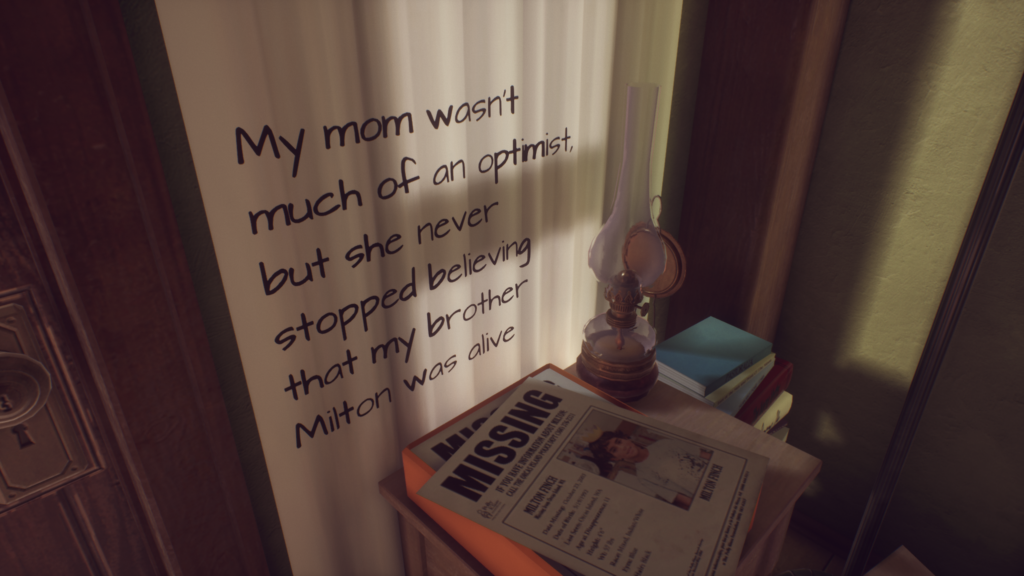The game
This week, I started to play What Remains of Edith Finch on my Nintendo Switch. It is a game developed by Giant Sparrow and published by Annapurna Interactive I did not read the synopsis. Instead, I allowed the narrative to unfold through play.
The Story and Target Audience
The game starts with a teenage girl on a ship and then navigating through an abandoned home. This makes me think that the target audience might be young adults. There is a level of mystery from the start, as you don’t know if this girl is Edith (from the name of the game). You also don’t know what is unique or special about this family, other than they are an eclectic family that lives by the water and woods! Clues unfold as you play, as you learn that some are missing and some are dead.
Mechanics & Design Choices
The mysterious home and surroundings can be explored in an unstructured or perhaps semi-structure way, as you walk from a first person perspective. The design choices that made this possible is that you can see the hands of the character you are playing by walking. Walking is a forced mechanism, as if you do not walk, the story does not progress. You can stand still and hear the sound of the surroundings, and that’s about it. Thus, this design decision influences the player to walk and to explore. For exploration, the designers chose to feature visual cues like small white hand icons, for example, signaling when an item in the environment is interactive. The hands flash at times and pop out in white as they are high contrast against the very dark background. This calls the player’s attention to them and cues them into using their character’s hands to interact with them. Stories unlock with these interactions, and a narrative is played through sound and ephemeral text giving the sensation of movement through time and space.

Type of fun
It’s interesting how walking tells the story from many perspectives, along with support from the environment and the discovery of narration. The game ends up feeling like a story or a puzzle, as well as a curious space ripe for exploration. There doesn’t seem to be a clear goal, beyond movement and discovery. Discovery, narrative, and challenge together combine to make this game fun. Challenge in this game comes in paying attention to the environment to identify clues, as well as the dexterity to jump on trees in a particular way when you are a cat, for example. The blend of these three dimensions of fun make it a very immersive experience!
Memorable Moments & What I Would Change
While the game is a walking simulation, what’s interesting is that you never seem to be one character for a long time. I was surprised when the walking simulation shifted from humans to animals — you first simulate a cat, then an own, shark, and monster. This design choice makes you feel a little disoriented, but has the effect of opening up what you think is the “magic circle.” Being human is not a boundary in this game. Personally, these transitions made me feel a little motion sick, so I had to put the game down, but am intrigued around what’s to follow. I am curious to learn more about Edith and her family. However, to make the game better, I would change the sensitivity of the controls and also make adjustment to the brightness, to prevent players from getting sick while playing! I am tempted to read the synopsis now as I may not be able to play without getting motion sick.



